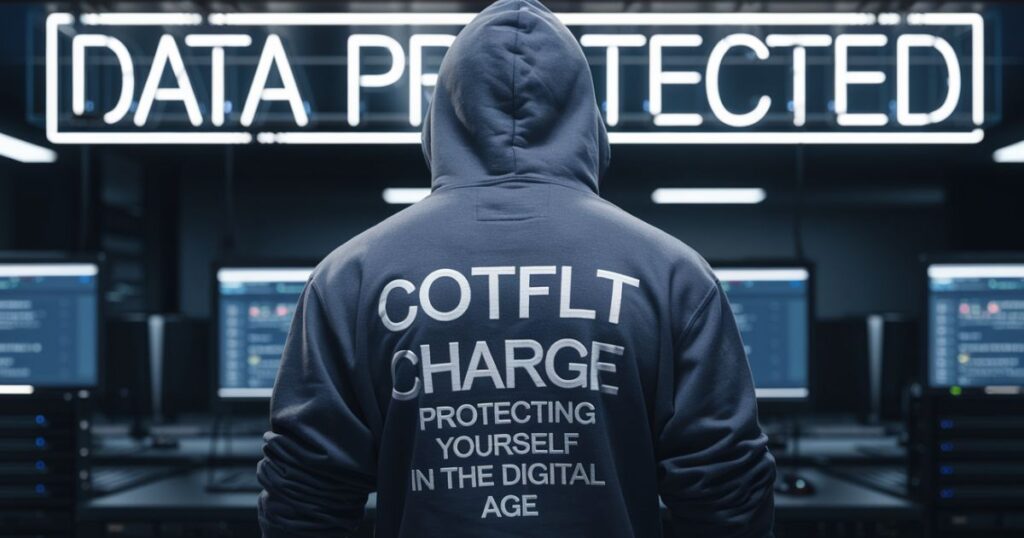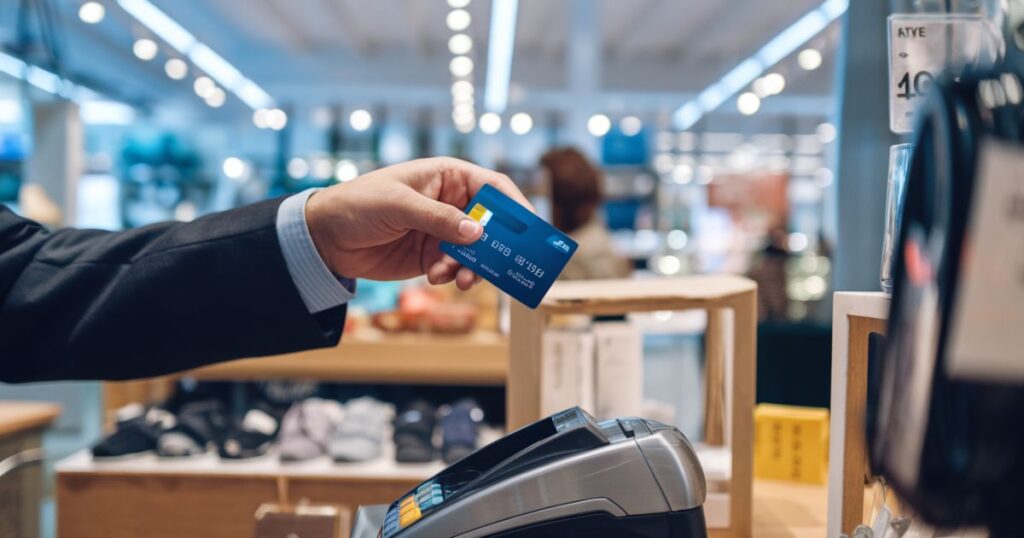Cotflt, short for “Capital One Travel Flight,” is a charge that appears on credit card statements. It represents a purchase made through Capital One Travel, a service for booking flights, hotels, and other travel arrangements. This abbreviation has been causing confusion among credit card holders in 2024, leading to its trending status.
Imagine opening your credit card bill and spotting a mysterious “Cotflt” charge. Your heart races as you wonder if you’ve fallen victim to fraud. But before you panic, there’s more to this story. This seemingly cryptic code is a key to unlocking a world of travel perks and conveniences.
In 2024, Cotflt has become a hot topic due to increased travel and the growing popularity of online booking platforms. As more people use Capital One Travel services, the frequency of these charges has skyrocketed. This trend has sparked discussions about financial literacy, credit card security, and the evolving landscape of digital payments in the travel industry.
Know The Cotflt Charge
The Cotflt charge is shorthand for “Capital One Travel Flight.” It’s a legitimate transaction that appears when you purchase through Capital One Travel. This service allows Capital One cardholders to book flights, hotels, and other travel arrangements directly through their platform.
However, the abbreviated nature of this charge has led to confusion and concern among many cardholders. Understanding what this charge represents is crucial to avoid unnecessary panic and ensure you’re not falling victim to any fraudulent activities. As more people embrace online travel booking services, encounters with such shorthand charges are becoming increasingly common.
What Does Cotflt Charge On Credit Cards Mean?

When you see a Cotflt charge on credit card statements, it typically indicates a purchase made for travel services. This charge is specifically associated with Capital One’s travel booking platform.
It’s not a hidden fee or a scam but rather a shorthand way of listing your travel-related expenses. The trend in 2024 is partly due to increased travel after years of restrictions, coupled with more people using online booking services.
As Capital One Travel gains popularity, more cardholders encounter this unfamiliar term in their statements, leading to widespread discussion and concern. While Cotflt charges are generally legitimate, their sudden appearance can be startling for those unfamiliar with the abbreviation.
Explanation Of The Charge
Understanding the nature of Cotflt charges is crucial for credit card holders. These charges can appear for various reasons, and not all are cause for alarm. Let’s break down the most common explanations for why you might see a Cotflt charge on your statement and explore each in detail.
1. Merchant Mislabeling
Sometimes, what appears as a Cotflt charge might be a case of merchant mislabeling. This occurs when a business’s registered name differs from its commonly known name, leading to confusion on your statement. For instance, you might book a flight through what you think is a familiar airline’s website, but the charge appears as Cotflt because it was processed through Capital One’s travel portal.
2. Subscription Renewals
Another reason for unexpected Cotflt charges could be subscription renewals. If you’ve set up automatic renewals for travel-related services through Capital One, these might appear as Cotflt on your statement. This could include annual travel insurance premiums, loyalty program fees, or recurring payments for travel-related apps or services you’ve subscribed to through your Capital One account.
3. Unauthorized Transactions
In some cases, Cotflt charges might indicate unauthorized transactions. While often legitimate, verifying any unfamiliar charges to protect yourself from potential fraud is essential. Cybercriminals are becoming increasingly sophisticated and may attempt to disguise fraudulent charges as legitimate-looking travel expenses. This is why vigilance and regular statement checks are crucial in 2024’s digital financial landscape.
Know If Cotflt Charge Is Legitimate?
Verifying the legitimacy of a Cotflt charge is crucial to maintaining your financial security. Here are some steps you can take to ensure the charge on your card is a legitimate transaction and not an unauthorized charge. By following these steps, you can protect yourself from potential fraud while also better understanding your spending habits.
Step 1: Checking your purchase history.
First, review your recent travel arrangements and bookings. The charge is likely legitimate if you’ve used Capital One Travel services recently. Look for email confirmations or receipts, or log into your Capital One Travel account to cross-reference your bookings with the charges on your statement.
Step 2: Checking the amount of the charge.
Compare the Cotflt charge amount with your recent travel expenses. It’s probably a valid charge for your recent bookings if they match. Remember to account for any additional fees, taxes, or currency conversion rates that might affect the final amount charged to your card.
Step 3: Checking the time and date of the transaction.
Verify if the transaction date aligns with when you made your travel bookings. This can help confirm if it’s a legitimate transaction. Remember that sometimes there might be a slight delay between when you make a booking and when the charge appears on your statement, especially for international transactions.
Contacting The Capital One Travel
If you’re still unsure about a Cotflt charge, contact Capital One Travel directly. They can provide detailed information about the charge and help you understand your recent transactions. Don’t hesitate to ask questions. It’s your right as a cardholder to understand every charge on your statement.
How do I contact CSC Service Works?
While CSC Service Works isn’t directly related to Cotflt charges, here’s a general guide for contacting customer service:
- Visit the official website
- Locate the ‘Contact Us’ or ‘Customer Support’ section
- Choose your preferred contact method (phone, email, chat)
- Prepare your account details and charge information before reaching out
- Be patient and polite – customer service representatives are there to help you
Remember, when dealing with financial matters, it’s always better to communicate through official channels. Avoid sharing sensitive information through unsecured means.
What To Do If You Suspect Fraud?
If you believe the Cotflt charge on your card is fraudulent, it’s crucial to act quickly to protect your finances. Here are the steps you should take if you suspect you’re a victim of credit card fraud. Time is of the essence in these situations, so don’t delay taking action.
Contacting Your Credit Card Company
Immediately reach out to your credit card company if you suspect fraud. They can freeze your card, investigate the charge, and guide you through the dispute process. Most card issuers have 24/7 fraud hotlines – use them! The sooner you report suspected fraud, the better protected you are.
Reporting Incident To The Authorities
After contacting your card issuer, consider reporting the incident to local authorities or the Federal Trade Commission (FTC). This helps combat fraud on a larger scale. Your report could be the missing piece in a larger investigation, helping protect not just you but other consumers.
Disputing Cotflt Charges
If you’ve confirmed that a Cotflt charge is unauthorized, you must dispute it with your credit card issuer. Here’s how to do this effectively. Remember, you have rights as a consumer, and credit card companies must investigate disputed charges.
Steps To Dispute A Charge
- Gather all relevant information about the charge
- Contact your card issuer’s dispute department
- Provide a detailed explanation of why you believe the charge is fraudulent
- Follow up regularly on the status of your dispute
- Be prepared to provide additional information if requested
- Keep records of all communications regarding the dispute
Contacting Your Credit Card Issuer
When disputing a charge, working closely with your credit card issuer is crucial. They’ll guide you through the process, but they may require additional information or documentation. Be patient but persistent. While most disputes are resolved quickly, some may take time, especially involving international transactions or complex fraud cases.
The Rise of Online Travel Bookings and Its Impact
The increasing prevalence of Cotflt charges in 2024 is closely tied to the booming online travel industry. As more people opt for the convenience of booking trips through platforms like Capital One Travel, we’re seeing a shift in how travel expenses appear on our statements.
This trend reflects broader changes in consumer behavior and the travel industry. Online booking platforms often offer competitive prices, loyalty rewards, and the convenience of managing all travel arrangements in one place. However, this convenience comes with the need for increased vigilance in monitoring our financial statements.
Protecting Yourself in the Digital Age

In light of the Cotflt trend, here are some additional tips to protect your finances in 2024’s digital landscape:
- Enable transaction alerts on your credit cards
- Regularly review your statements; don’t wait for the monthly bill
- Use strong, unique passwords for all financial accounts
- Be cautious about saving payment information on websites
- Consider using virtual credit card numbers for online purchases
- Stay informed about the latest phishing and fraud tactics
Remember, your best defense against fraud is your vigilance. By staying informed and proactive, you can enjoy the benefits of digital financial services while minimizing your risk.
Recommended Blog: FID BKG SVC LLC Moneyline: Key Facts You Shouldn’t Miss
Conclusion
The trend of Cotflt charges in 2024 underscores the need to stay vigilant about financial transactions. While often legitimate, these charges remind us to monitor our credit and debit card statements closely. Cotflt typically indicates a purchase via Capital One Travel, but verifying unfamiliar charges is crucial to avoid potential fraud.
As digital payments grow, understanding terms like Cotflt is vital. Financial literacy is more important than ever – by staying informed, you’re safeguarding your finances and supporting a more transparent financial system. Stay curious, stay informed, and travel securely!
FAQs
What is the charge on my credit card?
The charge on your credit card is a transaction or purchase made using your card. Check your statement for details on the merchant and amount.
What is Cotflt on a credit card statement?
Cotflt typically refers to a charge from Capital One Travel. Verify with Capital One if you’re unsure.
What does Mobile PMT mean?
Mobile PMT usually indicates a payment made through a mobile app or service.
Are you liable if someone opens a credit card in your name?
You may not be liable for fraudulent charges if you report the issue promptly and follow your card issuer’s procedures.

As a writer with a deep focus on bank statements and credit card issues, I’m committed to unraveling the complexities of financial matters. I specialize in identifying and addressing fraudulent transactions, providing readers with clear, actionable insights. My goal is to make finance less daunting and more accessible, helping others navigate their financial journeys with confidence.






